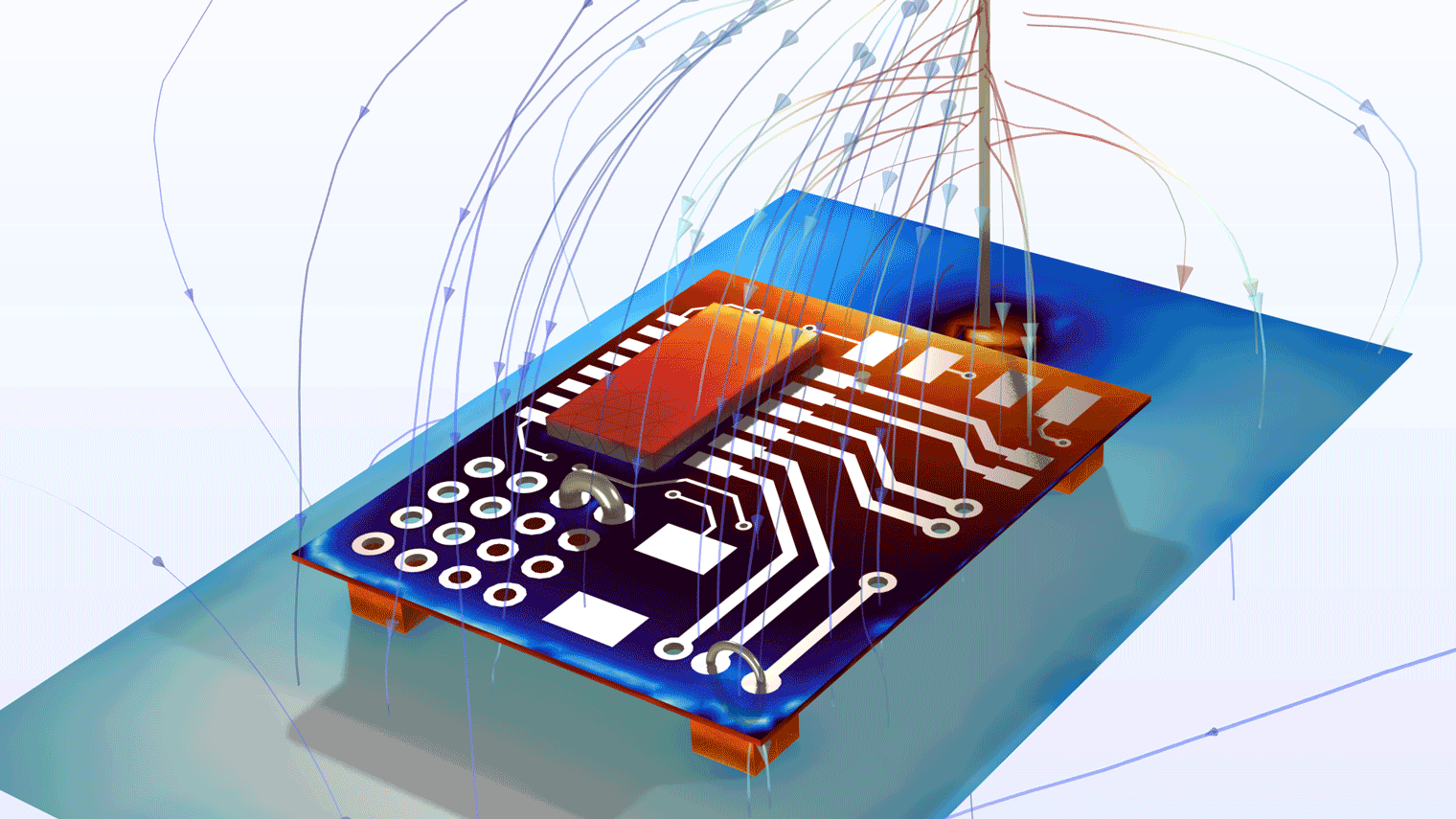support@comsol.com
RF Module Updates
For users of the RF Module, COMSOL Multiphysics® version 6.1 introduces new features for electrostatic discharge and lightning pulses, the ability to define conductive boundaries quickly by clicking domains, and usability enhancements for a variety of utility features and functionality. Learn about all of the RF Module updates below.
Electrostatic Discharge and Lightning Pulses
Electrostatic discharge (ESD) and lightning can have detrimental effects on electronic components. Thus, the modeling of ESD and lightning is of great importance in many industries. Both the Lumped Port and Edge Current features in the Electromagnetic Waves, Transient interface now support predefined and parameterized temporal pulse functions that are often used to describe ESD and lightning. For convenience of inspection, the pulse shapes can be instantly plotted before running the simulation to ensure that the chosen function parameters are suitable.
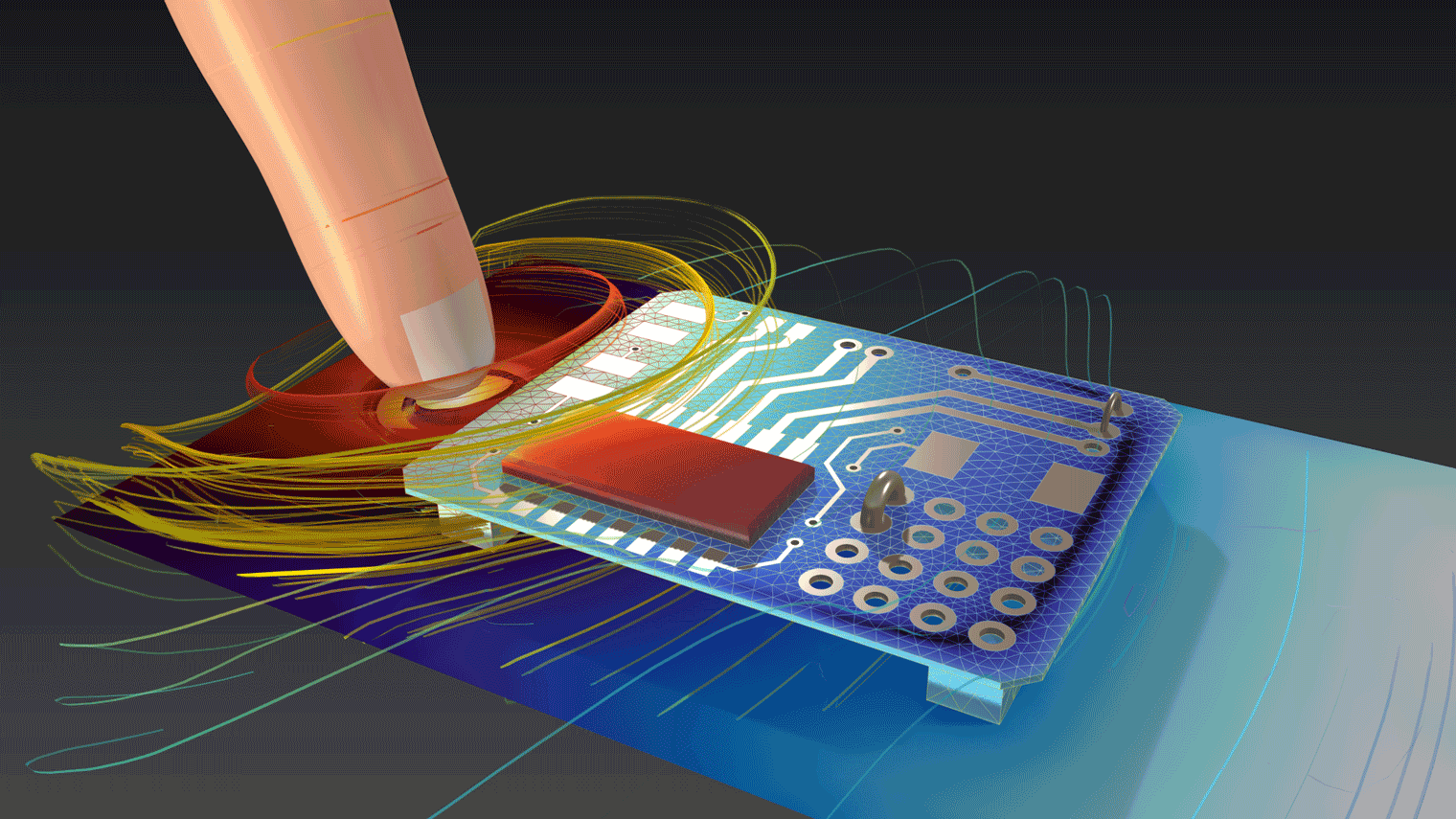
Lumped Port Feature in the Electromagnetic Waves, Boundary Elements Interface
The Lumped Port feature is ubiquitously used to excite and terminate antennas, transmission lines, and other devices when using the Electromagnetic Waves, Frequency Domain interface. This feature is now available in the Electromagnetic Waves, Boundary Elements interface and includes the Coaxial, User Defined, Via, and Uniform lumped port types.
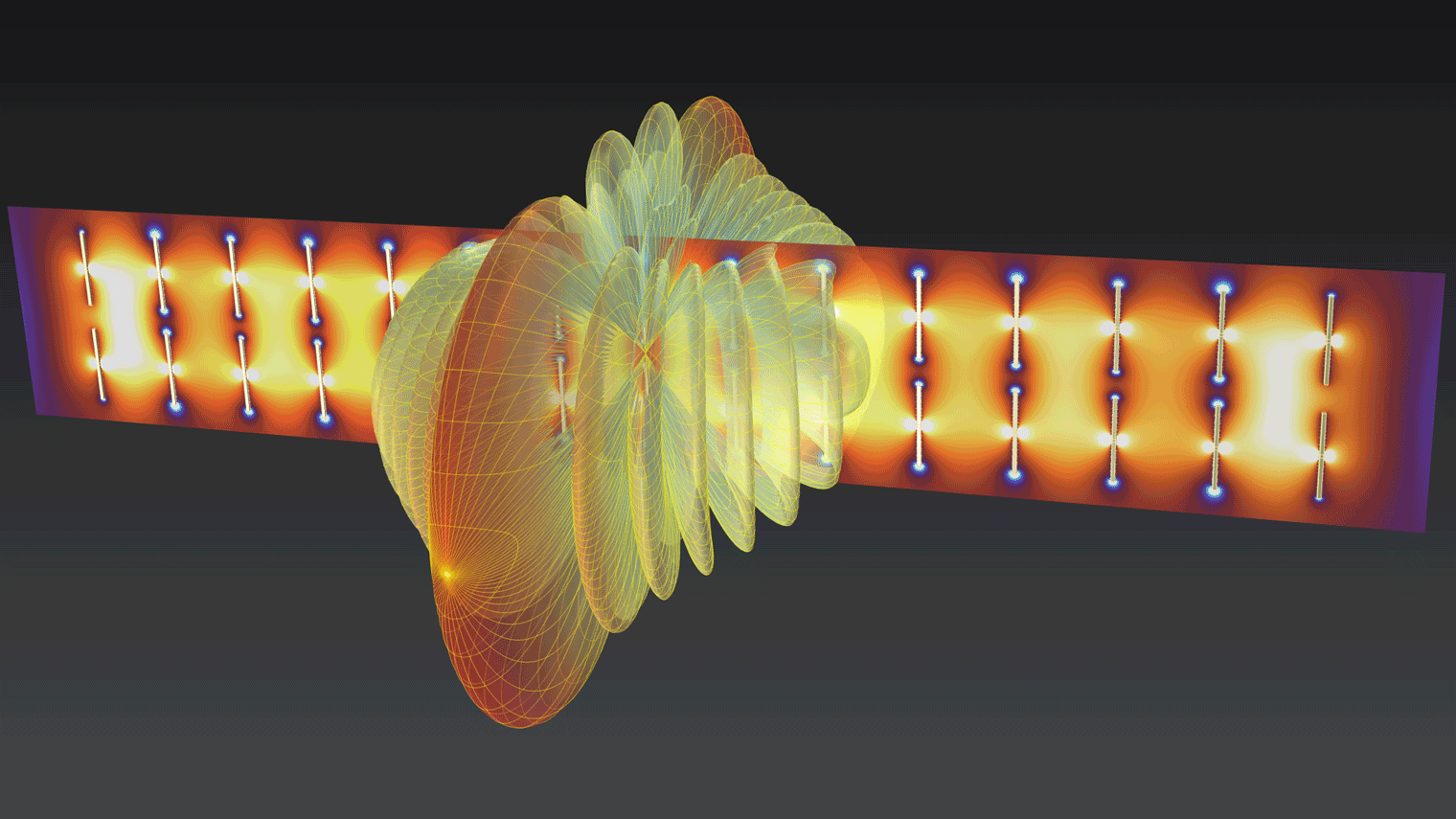
Dielectric Scatterer in the Electromagnetic Waves, Boundary Elements Interface
The interaction of electromagnetic waves with dielectric objects is now supported for the boundary element method, including the calculation of the associated far-field scattering properties. This new functionality is available in the Electromagnetic Waves, Boundary Elements interface. It requires adding a Wave Equation, Electric node to each dielectric scatterer domain. Furthermore, a Far-Field Calculation node can be added to evaluate far-field quantities, such as the radiation pattern.
Layered Impedance Boundary Condition
New functionality enables you to model multiple thin layers on top of a substrate with small skin depth, such as thin dielectric coatings on a metal surface. Such thin layers can be described using the Layered Impedance Boundary Condition feature, available in the Electromagnetic Waves, Frequency Domain interface. It requires combining a Layered Material in the global Materials node and a Layered Material Link in the Materials node.
Linearly Polarized Plane Wave Background Field in 2D Axisymmetry
The Linearly polarized plane wave background field type with arbitrary polarization and incident angle is now available for 2D axisymmetry and utilizes an expansion method. It is suitable for modeling the scattering of bodies of revolution under plane-wave excitation. When compared to modeling the same problem in 3D, the 2D axisymmetric model uses significantly less memory and time, especially for electrically large scatterers, and facilitates using a denser mesh for improved accuracy. When using the Linearly polarized plane wave background field in 2D axisymmetry, an auxiliary sweep of the azimuthal mode number is automatically added. To construct the full solution, summing over the contribution from each azimuthal mode is required in postprocessing. You can see this feature demonstrated in the new Cloaking of a Cylindrical Scatterer with Graphene (RF) tutorial model.
Plotting Analytical Port Mode Field Before Computation
The mode fields of the Rectangular, Circular, and Coaxial port types are described by analytical functions. In this version, these port mode types can be previewed before running the simulations, with the condition that the Port boundaries are parallel to the major axes.
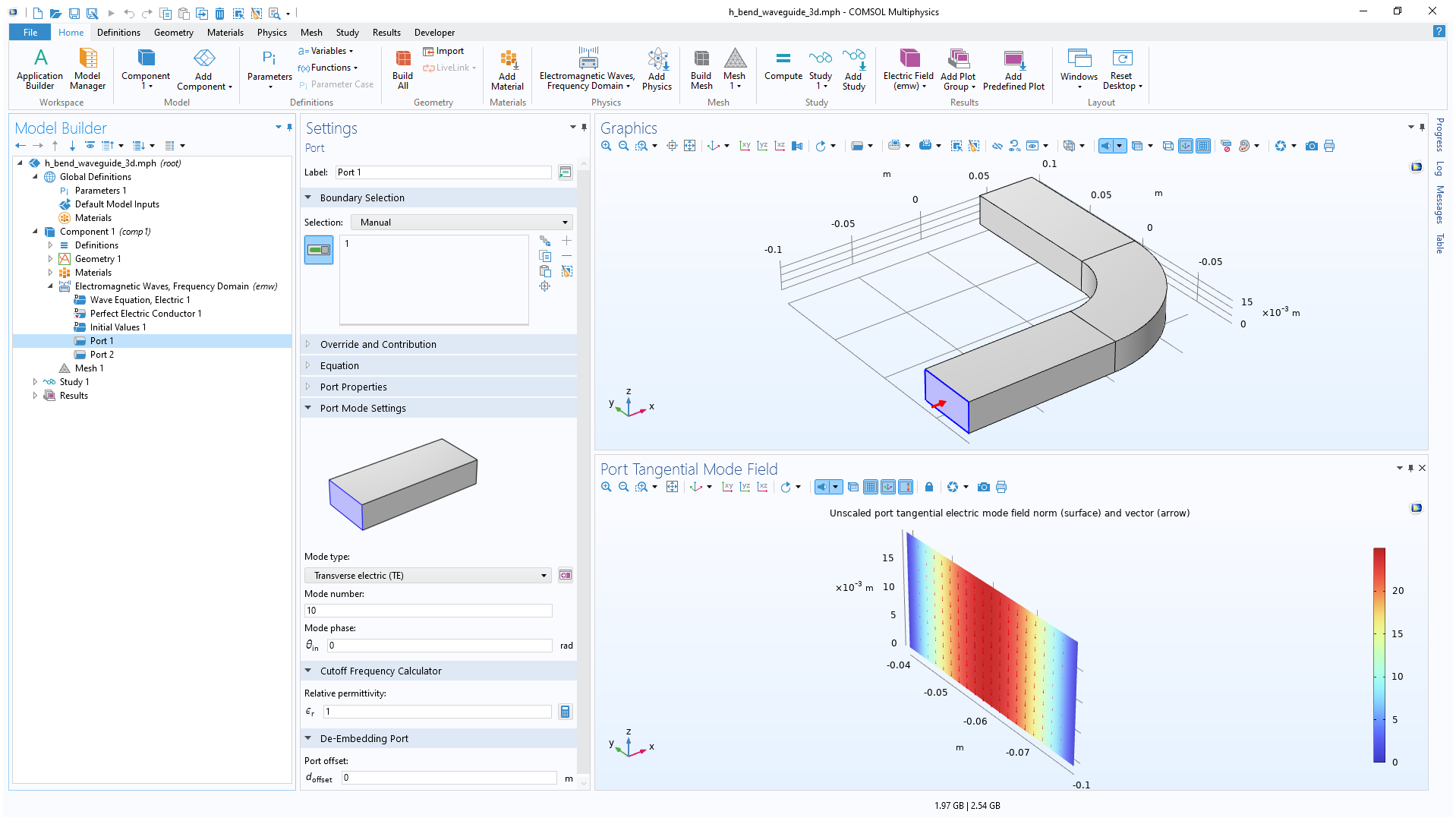
Better User Experience for Assigning Conductive Domains
When domains are filled with highly conductive materials, they usually do not have to be modeled explicitly. Rather, their boundaries need to be modeled. The Perfect Electric Conductor (lossless) and the Impedance Boundary Condition (lossy) boundary conditions can be applied to the boundaries of a conductive domain, with the interior of the domain removed. When the conductive domain contains many boundaries, it is often cumbersome to apply the boundary condition to all of them individually. In version 6.1, the new Perfect Electric Conductor and Impedance Boundary Condition domain conditions can be directly applied to the conductive domain without having to locate all the boundaries or manually remove the interior. The conductive domain features are available in the following models:

Skin Depth Calculator
A new skin-depth calculator functionality can be used to compute skin depth, which can be defined by the electrical conductivity or resistivity of a material. This can help you determine if the application of a particular boundary condition is appropriate. The Skin Depth Calculator is available in the settings of the Impedance Boundary Condition, Transition Boundary Condition, Layered Impedance Boundary Condition, and Layered Transition Boundary Condition features. The Skin Depth Calculator feature is showcased in the following models:
New Easy-To-Use Symmetry Plane Feature
The Symmetry Plane feature simplifies the definition of perfect electric conductor (PEC) and perfect magnetic conductor (PMC) symmetry planes. This feature is used instead of the Perfect Electric Conductor and Perfect Magnetic Conductor boundary conditions when reducing the model size from symmetry considerations. Furthermore, the information about the type and location of the Symmetry Plane features is used when calculating far fields and when defining analytical Port mode fields and Lumped Port impedance. You can see this new feature in the existing Microwave Oven model.
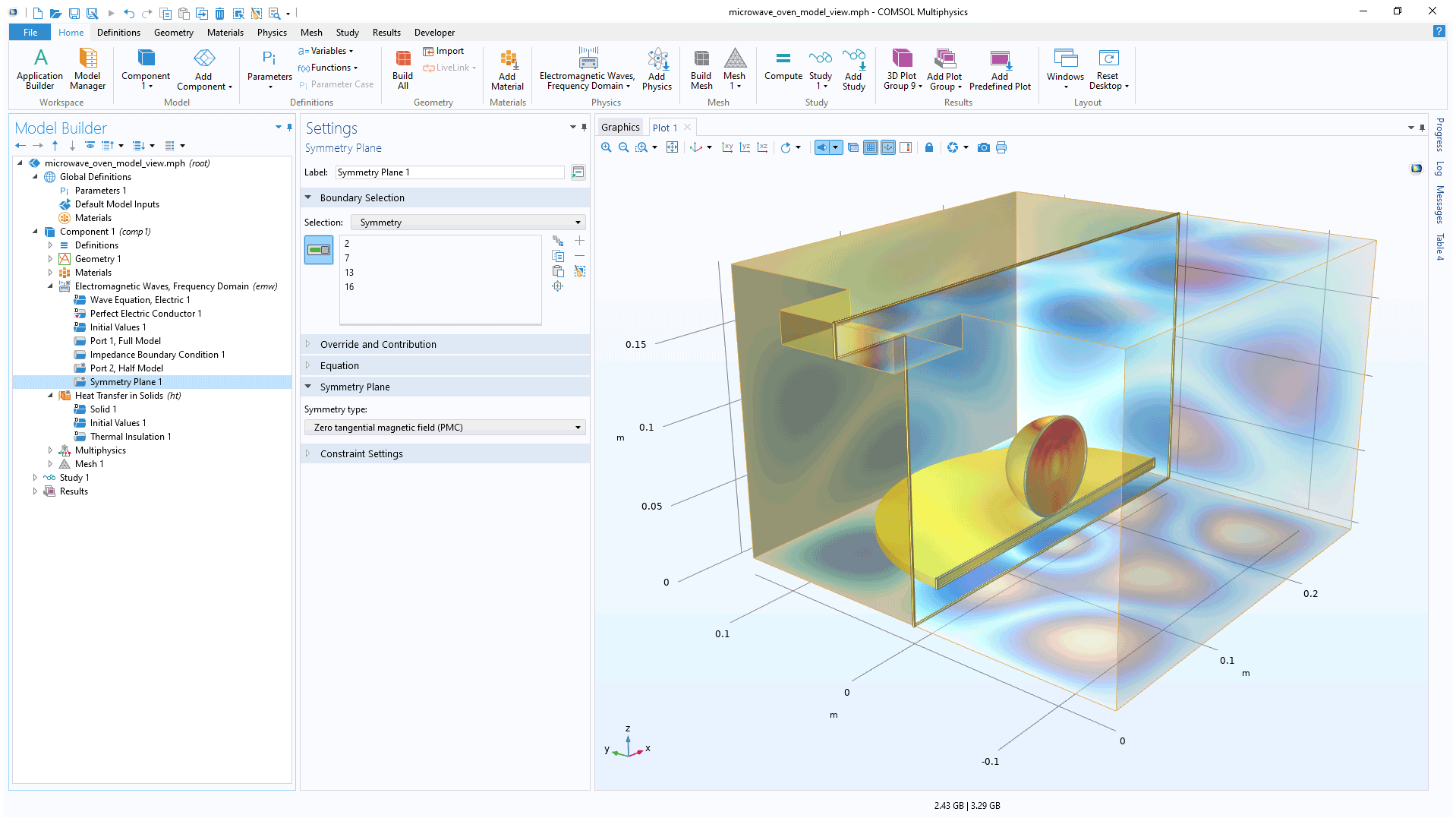
Array Factor Dataset for Fast Evaluation of Antenna Array Performance
The visualization of a virtual antenna array can be realized by combining the array factor function and the far field of a single antenna. This process often requires a lengthy expression but is now easier to use with the new Array Factor dataset. All input arguments into the array function can be added intuitively to the Array Factor dataset. When a simple single-antenna far-field or gain expression is used in a radiation pattern plot while the dataset is configured to the Array Factor, it will automatically combine the expression and array factor function, and generate a virtual array radiation pattern. This feature can be viewed in the existing Microstrip Patch Antenna and Modeling of a Phased Array Antenna models.
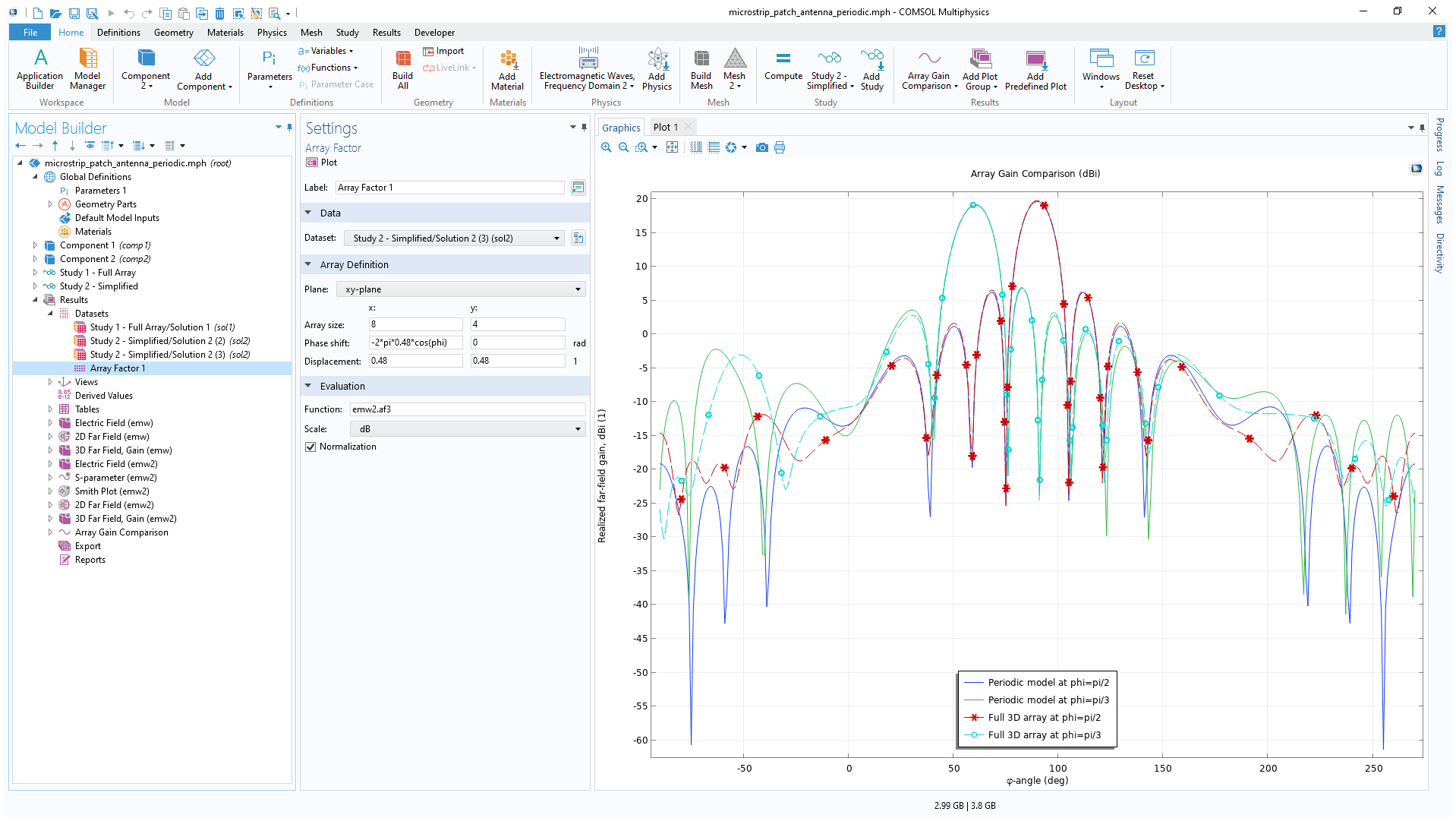
Quick Mesh Refinement on Far-Field Calculation Boundaries
In the physics-controlled mesh settings of the Electromagnetic Waves, Frequency Domain interface, an Add far-field boundary layers check box is provided. When selected, a boundary layer mesh with a thickness of 1/40 of the default maximum mesh size is created in the far-field calculation boundaries adjacent to the selection of scattering boundary conditions or perfectly matched layers. This helps you obtain more accurate far-field analysis results such as the total radiated power (emw.TRP) and radar cross section (RCS) (emw.bRCS3D).

Four-Port Network
The Electromagnetic Waves, Frequency Domain interface now includes the Four-Port Network boundary condition, which characterizes the response of a four-port network component using S-parameters. You can import a Touchstone file to describe, through four-port boundaries, the physical behavior and response of a four-port device or system without addressing a complicated geometry.
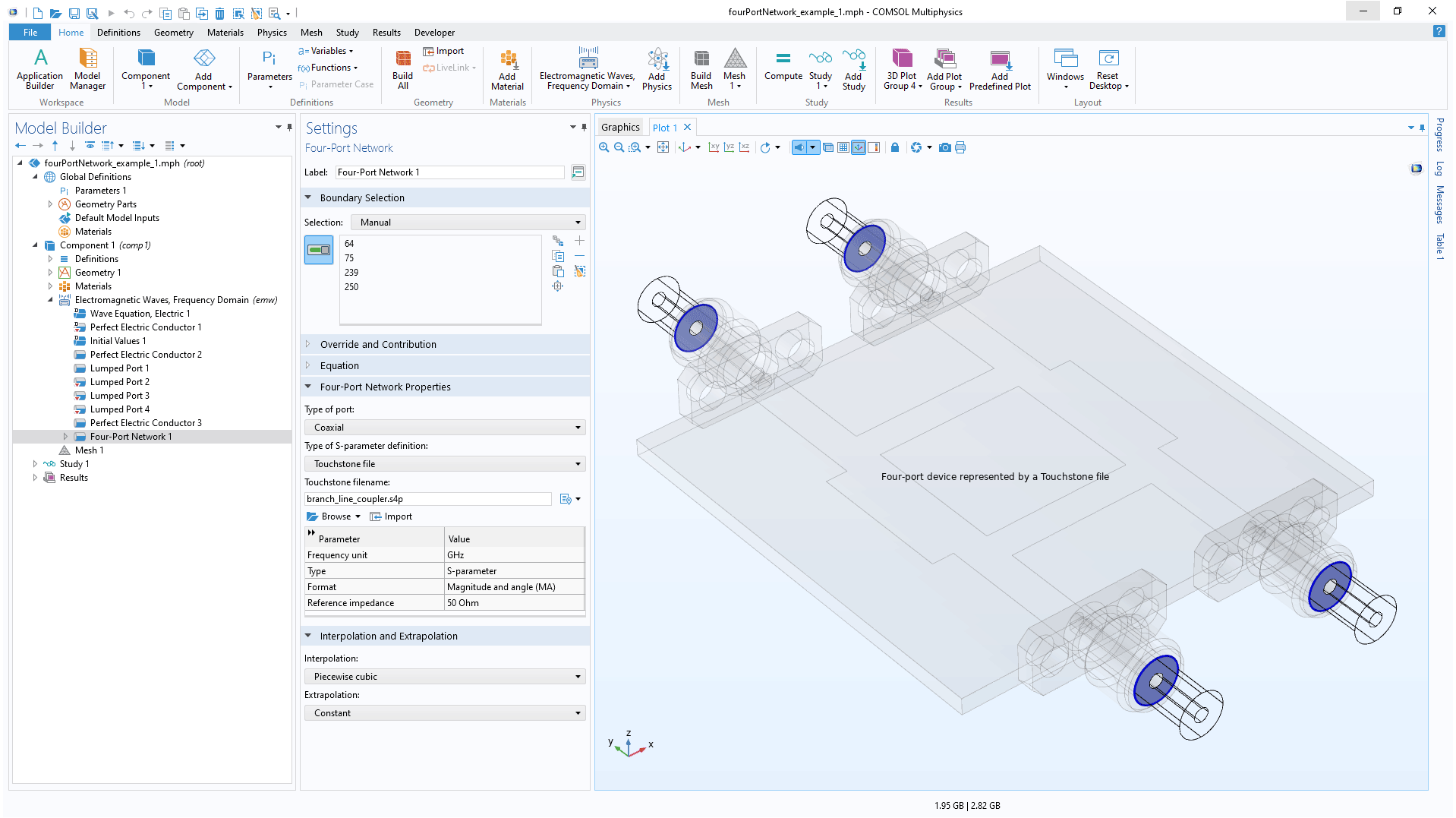
Finite Element Method (FEM)–Boundary Element Method (BEM) Multiphysics Coupling
A new FEM–BEM coupling feature simplifies the setup of hybrid FEM–BEM models for electromagnetic waves. This is available in the Model Wizard as an Electromagnetic Waves, FEM-BEM multiphysics interface, which combines the Electromagnetic Waves, Frequency Domain and Electromagnetic Waves, Boundary Elements interfaces with a new Electric Field Coupling multiphysics coupling feature.
Upwind Flux Formulation
The Flux type parameter in the Wave Equations node for the Electromagnetic Waves, Time Explicit interface now also includes an Upwind flux option. This option can be used to improve S-parameter calculations that may have low accuracy due to overdissipation around perfect electric conductor (PEC) edges, which can occur when using the default Lax-Friedrichs flux parameters.
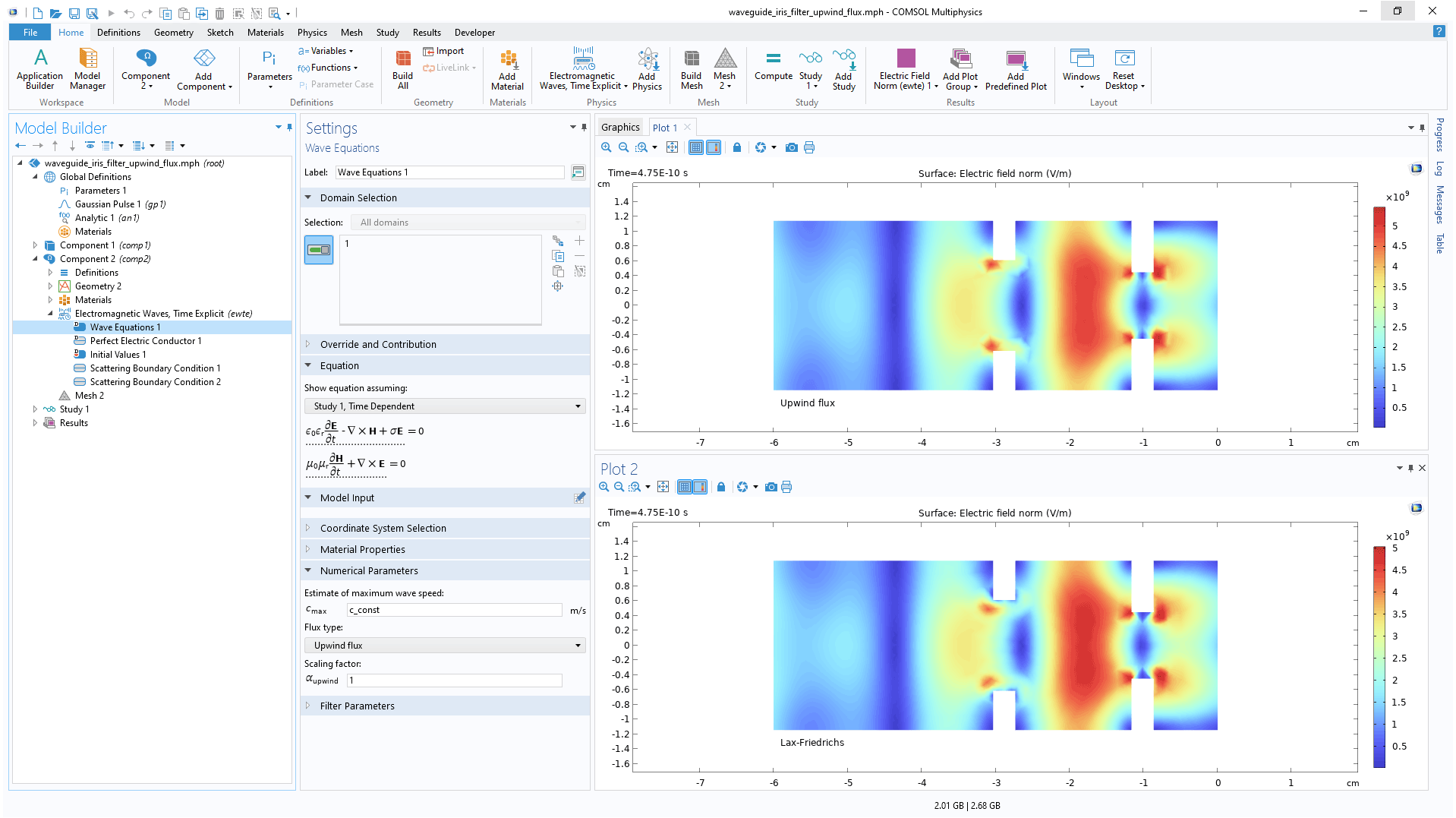
Weak Formulation Port Option
When expanding the electric field on a port boundary, the new Weak port formulation adds a scalar dependent variable for the expansion coefficient (the S-parameter) and then solves for the S-parameters and the tangential electric field on the boundary using only a weak expression. Since no constraints are used, this formulation completely removes the constraint-elimination step when solving, leading to more efficient computations. This new port formulation replaces the constraint-free port formulation that was introduced in version 6.0.
You can see this new port formulation in almost all port-based tutorial models, including:
Covariant Formulation in 2D Axisymmetry
In the 2D axisymmetric formulation, it is beneficial to formulate the out-of-plane dependent variable as
,
which is referred to as the covariant formulation. Here, Ψ is the dependent variable and is the radial coordinate. The out-of-plane electric field component is thereby calculated as
The covariant formulation has better performance in terms of numerical stability and accuracy. Compared to previous versions, eigenfrequency simulations can return fewer eigenfrequencies; however, the returned solutions have better accuracy, and fewer spurious solutions are returned.
This formulation is used for all study types except Mode Analysis and Boundary Mode Analysis and can be viewed in the following models:
Improved Performance for Adaptive Frequency Sweep
The Adaptive Frequency Sweep study step has been optimized for analyses where the field output is stored only for a selection, such as a domain or boundary. This is useful for ports in filter applications, for example. The performance improvement for such a sweep is up to 25%. The performance gain is even larger for applications where very high resolution results are requested. The following models showcase this new improvement:
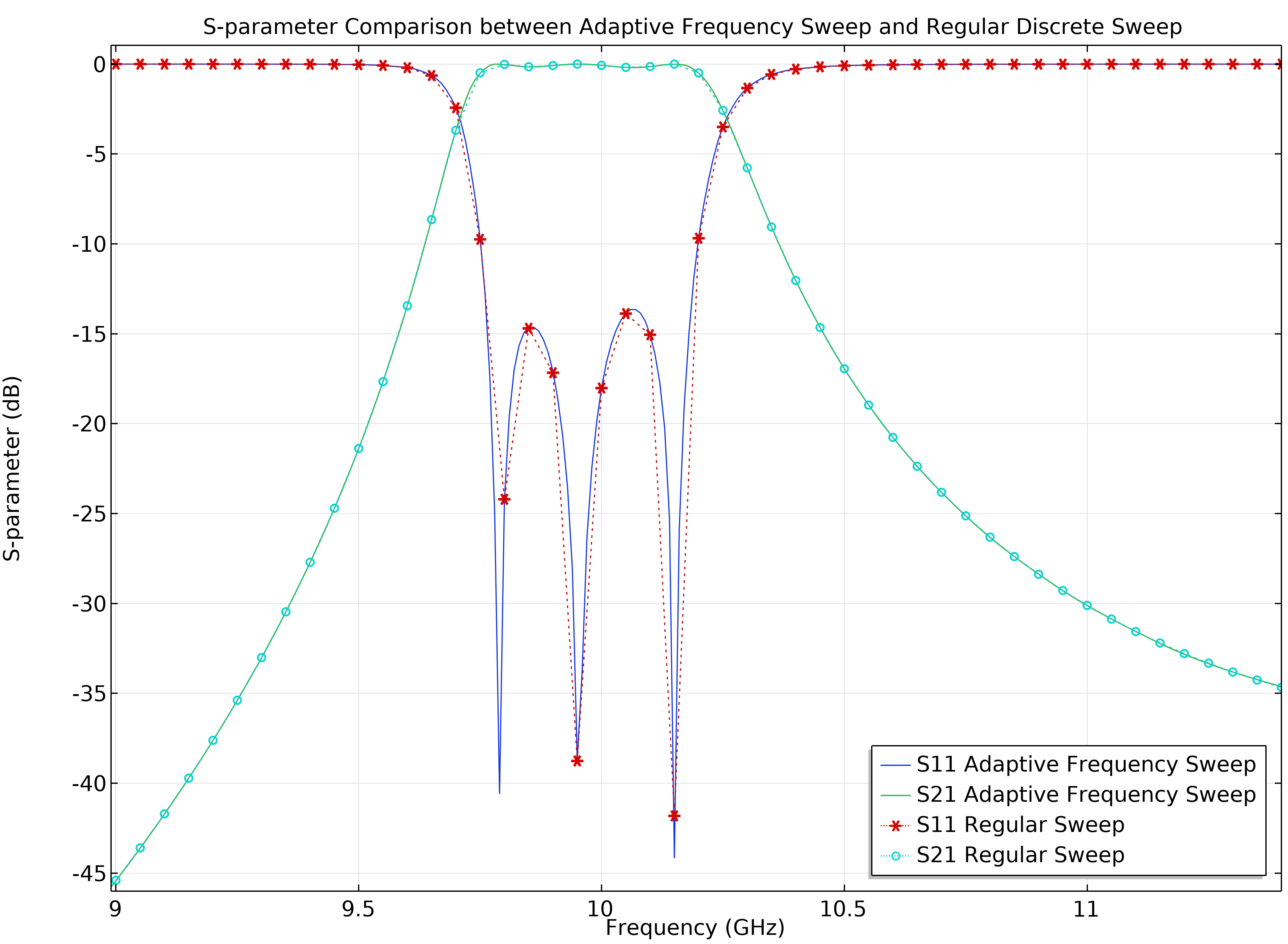
New Tutorial Models
COMSOL Multiphysics® version 6.1 brings several new tutorial models to the RF Module.
Lightning-Induced Voltage of a Wire in an Airplane
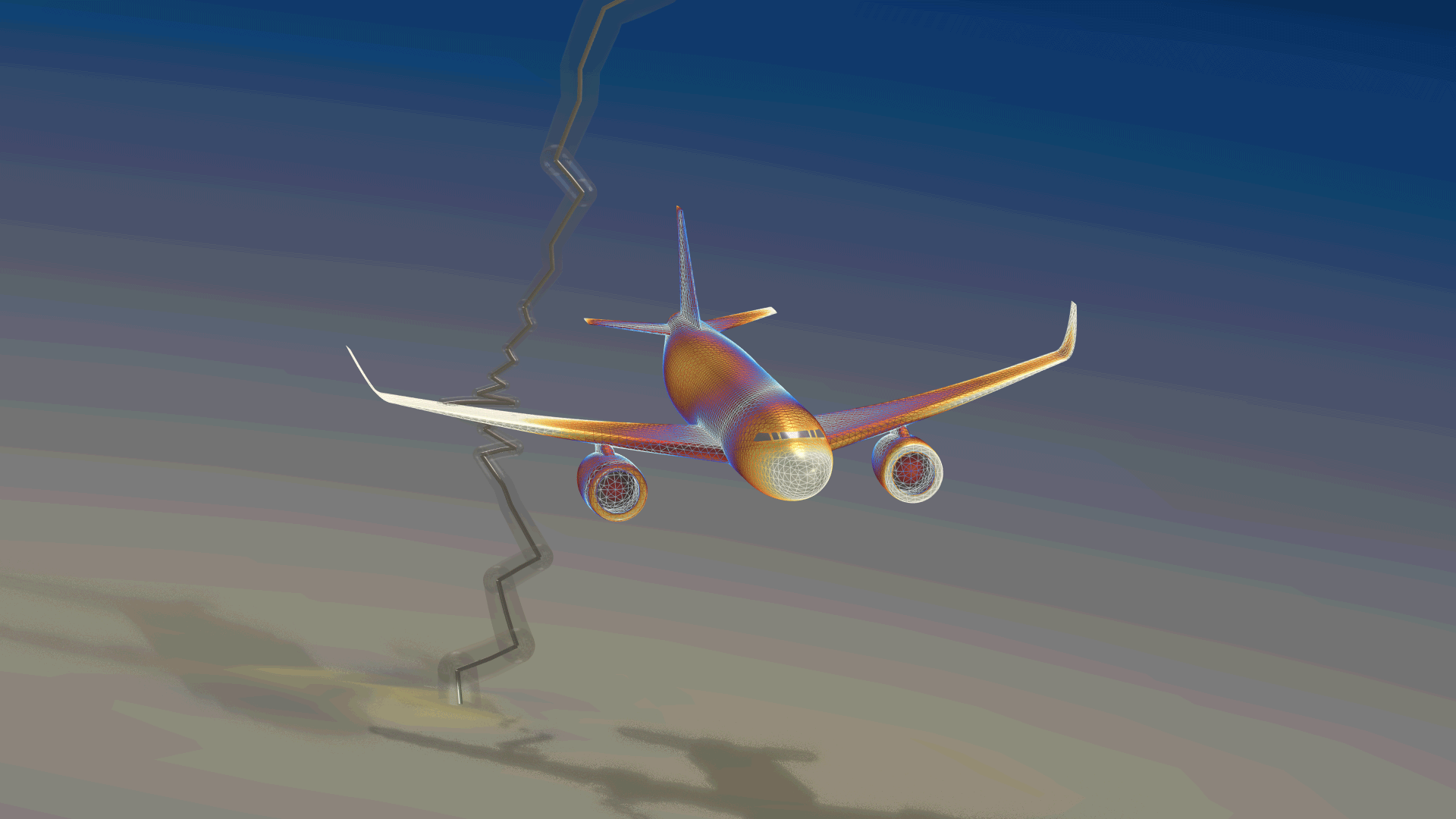
Application Library Title:
lightning_induced_voltage_airplane
Lightning-Induced Voltage of an Overhead Line Over Lossy Ground
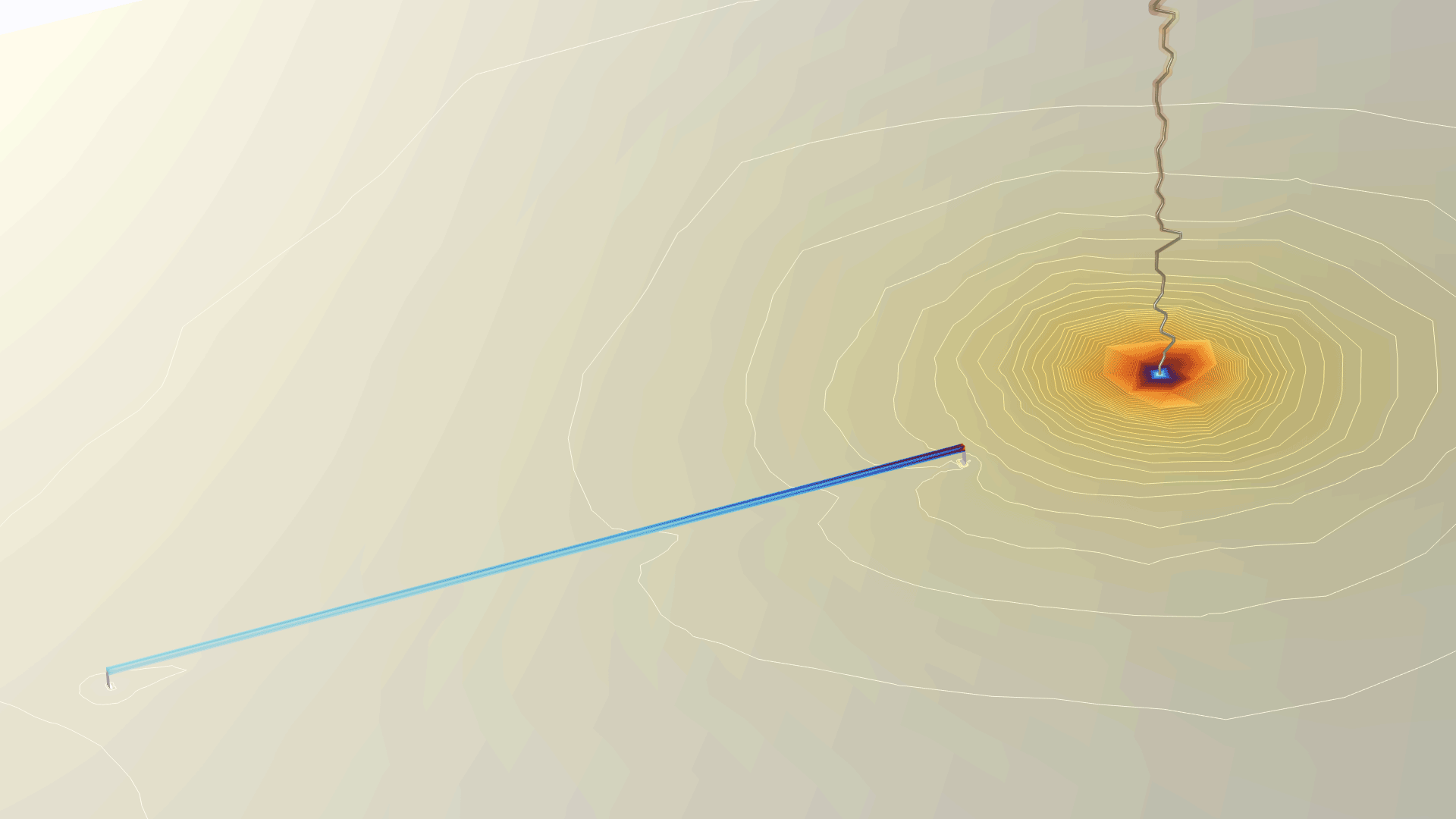
Application Library Title:
lightning_induced_voltage_overhead_lines
Cloaking of a Cylindrical Scatterer with Graphene
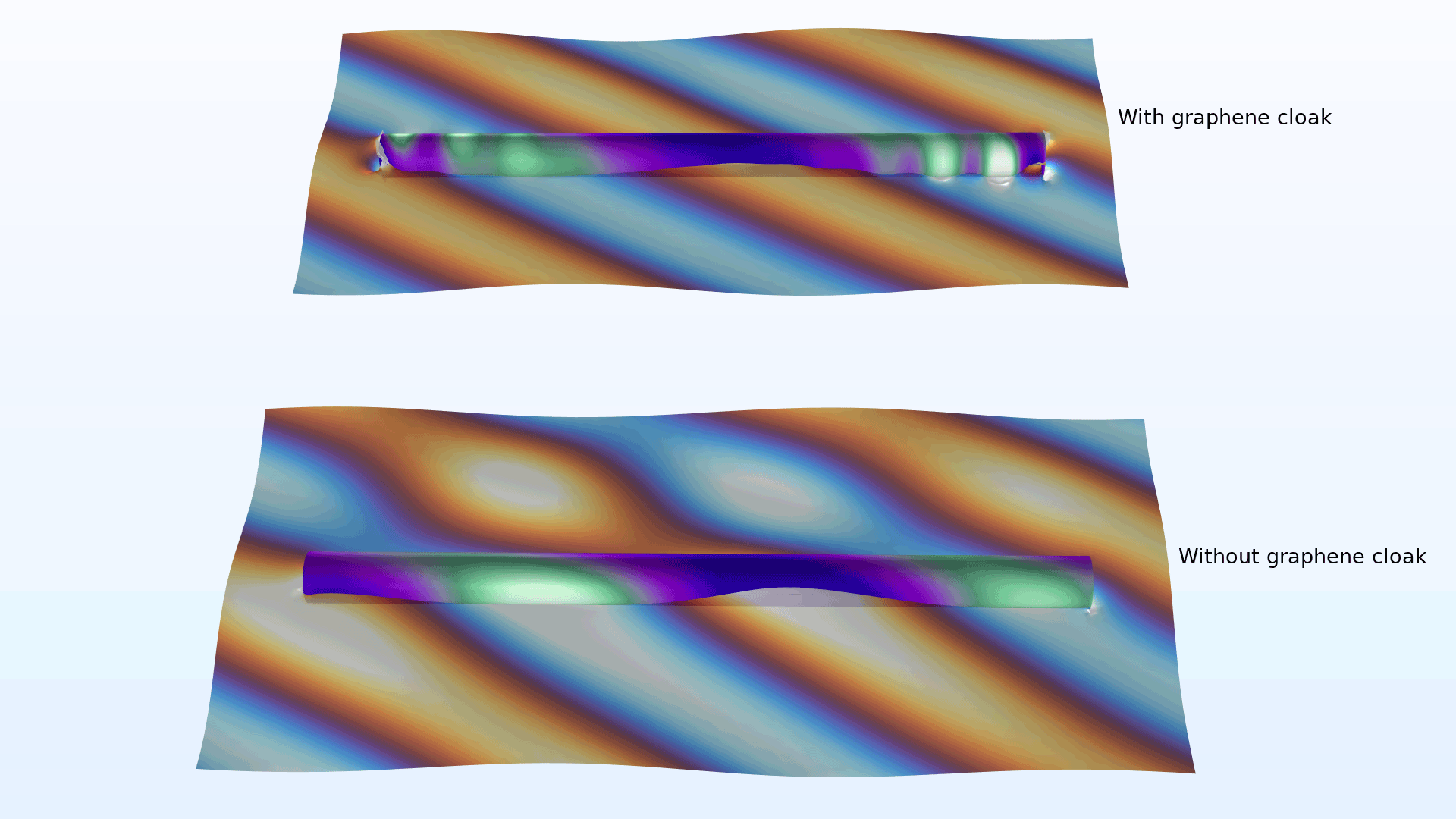
Application Library Title:
cylinder_graphene_cloak
Modeling of a Differential Microstrip Line
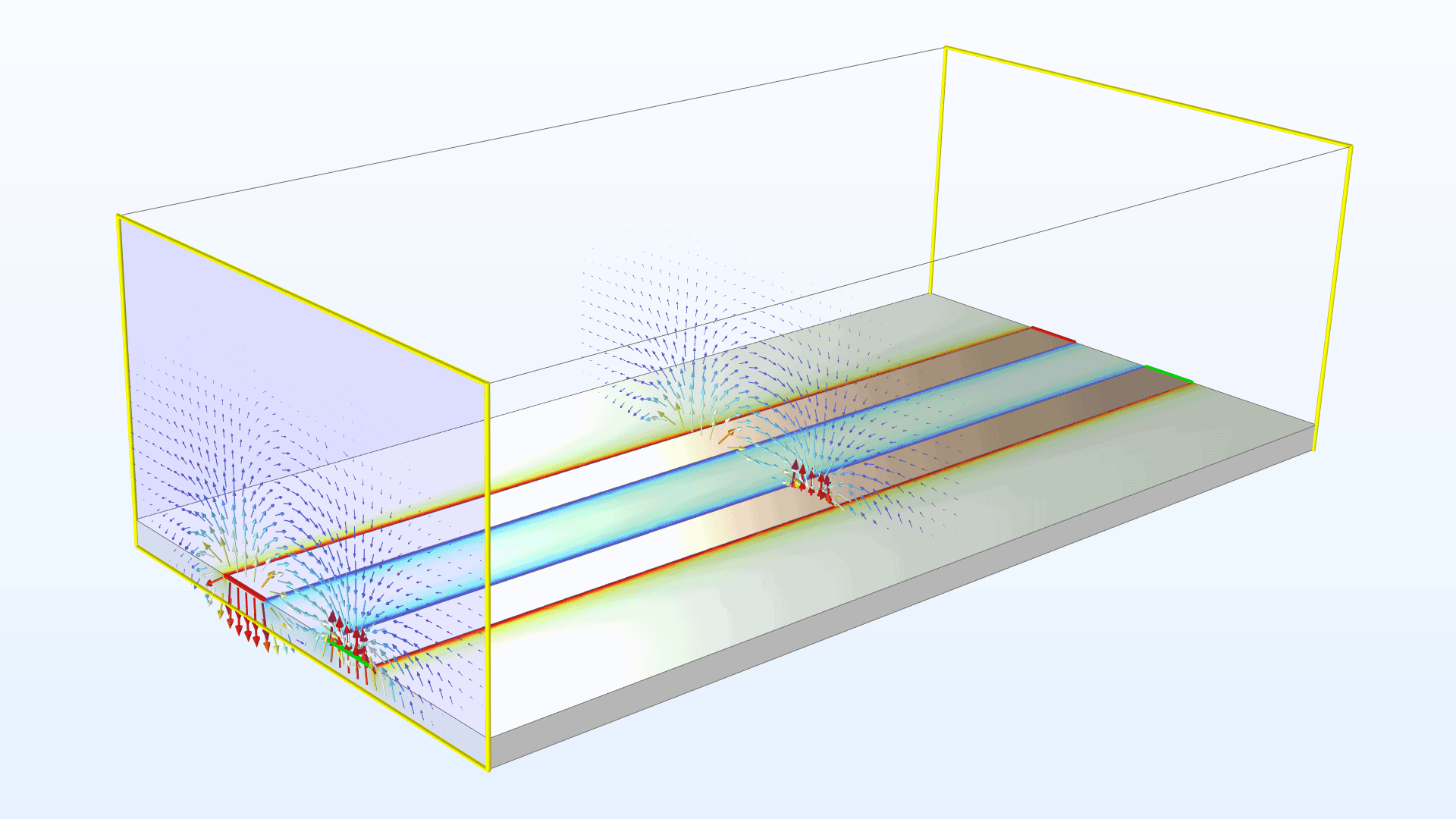
Application Library Title:
microstrip_line_tem_differential

